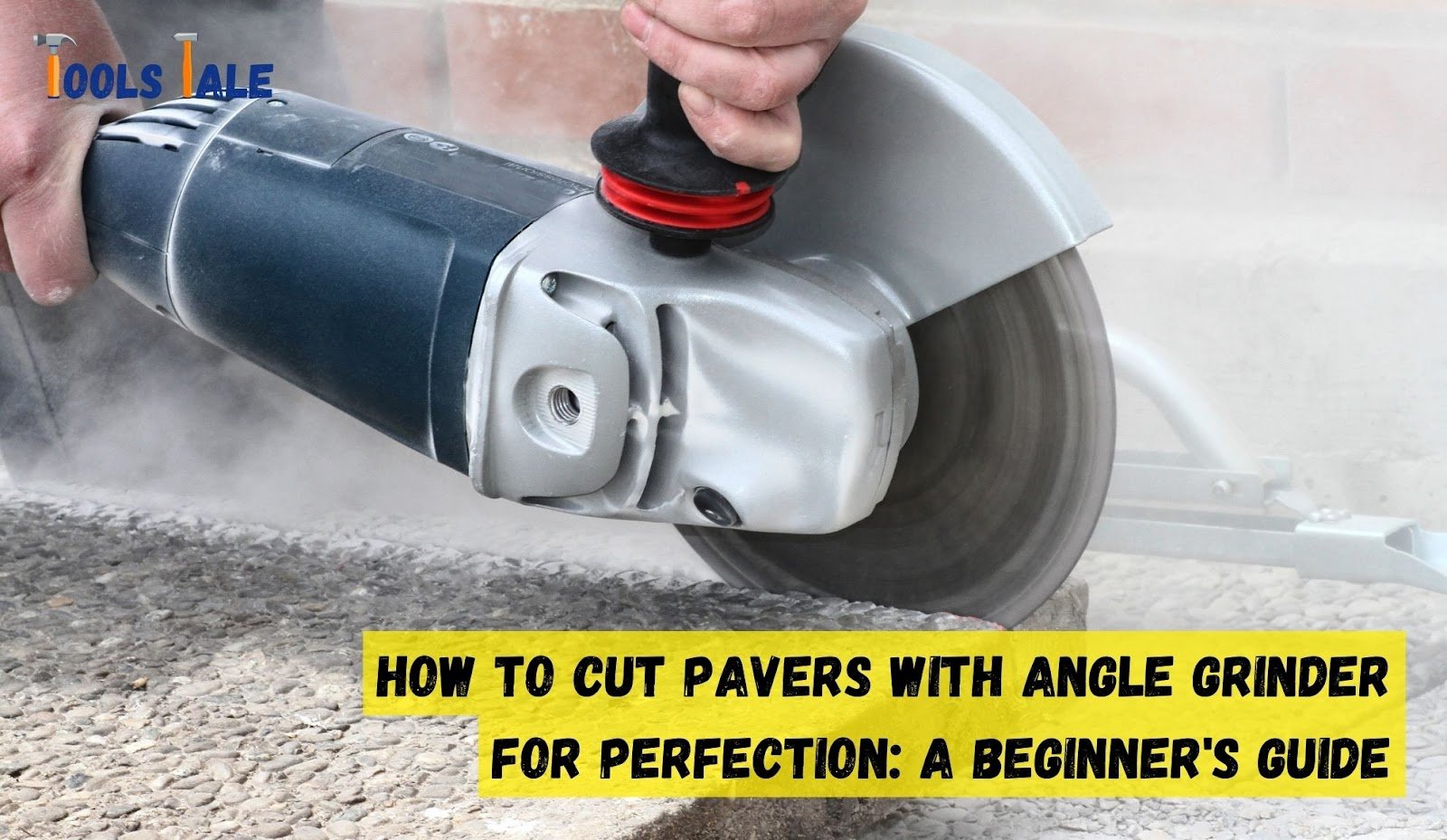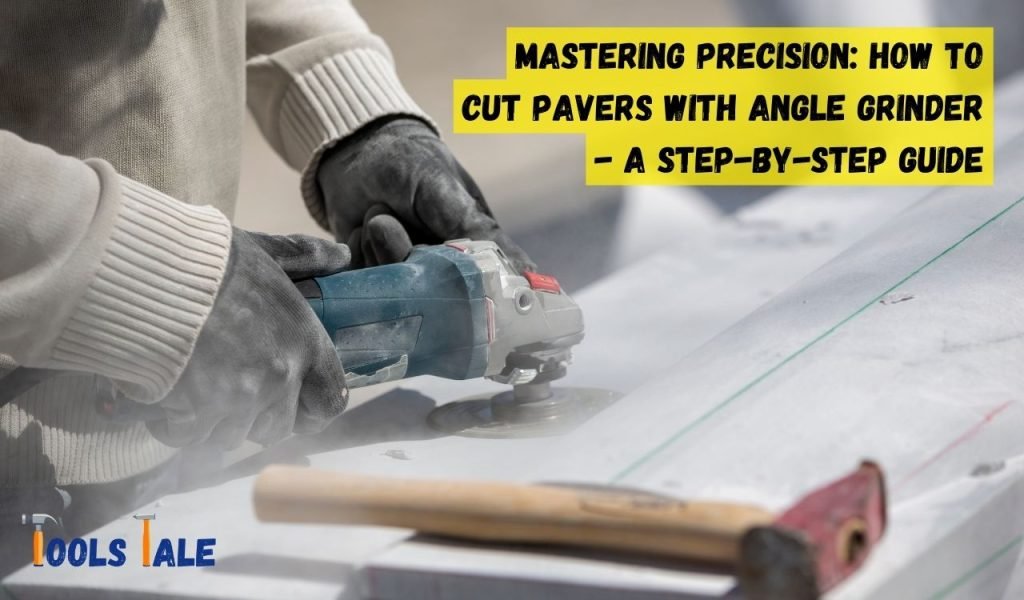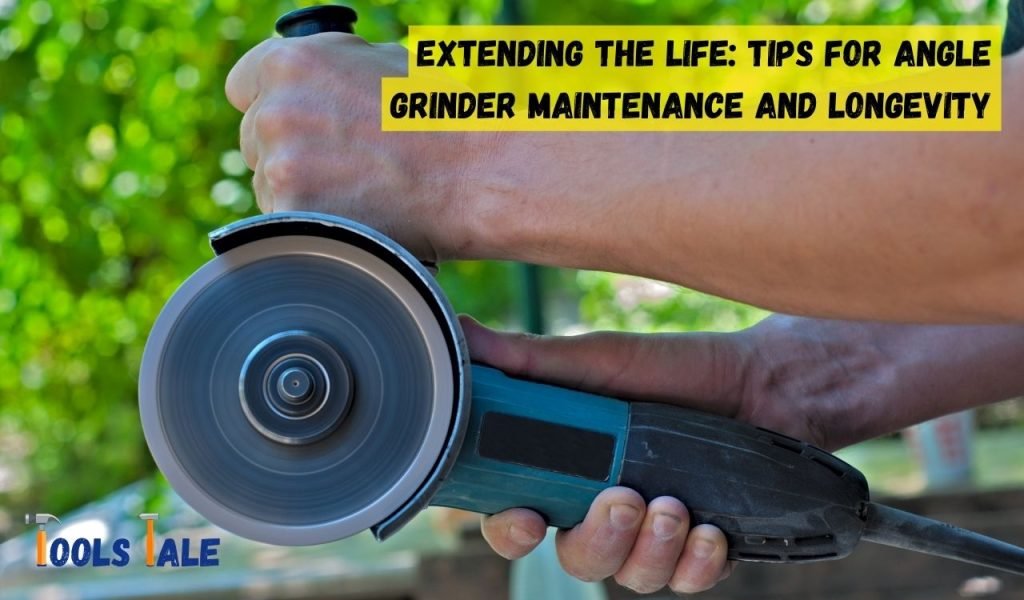Physical Address
304 North Cardinal St.
Dorchester Center, MA 02124
Physical Address
304 North Cardinal St.
Dorchester Center, MA 02124

How to cut pavers with angle grinder? Ever been stuck with sturdy pavers that just won’t fit your project puzzle? Well, we’ve got your back with a quick, no-nonsense guide to tackle this challenge head-on. Imagine transforming those stone blocks into perfect pieces that slide right into place-sounds satisfying, right?
In this guide, we’ll demystify the art of using an angle grinder to cut pavers, making it a breeze for even the DIY beginners. No jargon, just clear steps and expert advice to rev up your DIY game. Let’s rev those angle grinders and get cutting!
Key Summary: How to Cut Pavers with Angle Grinder?
Cutting pavers with an angle grinder is efficient and precise. Typically, cutting pavers takes a few minutes per piece, depending on thickness and accuracy required. Prioritize safety with protective gear. Maintain the grinder for optimal performance and longevity, ensuring a smooth cutting experience.
An angle grinder, also known as a disc grinder or side grinder, is a powerful handheld tool used in various construction, metalworking, and DIY projects. It features a motor-driven spindle to which an abrasive or cutting disc is attached. The name “angle grinder” stems from the right-angle head it typically possesses, enabling precise cutting, grinding, and polishing at different angles.
The key components of an angle grinder include the motor that provides rotational force, the disc that varies in size and type based on the intended application, a handle for grip and control, an on/off switch for ease of operation, a spindle lock to facilitate disc changes, and a side handle to enhance stability during use.
Angle grinders are incredibly versatile and find applications in cutting through tough materials such as metal, concrete, and tile. They are also used for grinding tasks, smoothing rough surfaces, and removing excess material. Additionally, angle grinders can be equipped with wire brushes for tasks like paint or rust removal.
Available in different sizes based on the diameter of the disc, angle grinders cater to various user preferences and job requirements. Professionals and DIY enthusiasts highly value angle grinders for their efficiency, power, and ability to handle a wide range of tasks.
Selecting the right angle grinder is a crucial decision, as it significantly impacts the outcome and efficiency of your cutting, grinding, or polishing task. An angle grinder, a versatile power tool used for a multitude of applications, is distinguished by its ability to handle abrasive or cutting discs. Here’s a guide to help you navigate the process of choosing the perfect angle grinder for your needs.
The size of the disc is a critical factor. Common sizes include 4.5-inch, 5-inch, 6-inch, and 9-inch grinders. Smaller discs typically offer more precision, making them ideal for light tasks, while larger discs provide more power, suitable for heavy-duty applications.
The power of the motor is another vital consideration. Motors range from about 6 to 13 amps, influencing the grinder’s efficiency and speed. For lighter tasks, a lower amp motor suffices, while heavier tasks demand a higher amp motor for faster, smoother performance.
Angle grinders come with varying speed ratings, usually measured in revolutions per minute (RPM). Higher RPM indicates faster rotation, leading to quicker material removal. Ensure the grinder you choose has a speed rating suitable for the intended tasks.
Comfort and usability are paramount. Consider the design of the handle and how it feels in your hand. Opt for a grinder with a comfortable grip and a manageable weight that you can use for extended periods without strain.
Prioritize safety by choosing a grinder with safety features like a paddle switch for easy and quick power control, anti-vibration handles for reduced fatigue, and a spindle lock for secure disc changes.
Evaluate the power source based on your needs. Corded grinders provide continuous power but might restrict movement, while cordless grinders offer portability but have limited run-time and require battery charging.
Consider reputable brands known for manufacturing quality power tools. Read reviews from other users to gain insights into the grinder’s performance, durability, and overall satisfaction.
Lastly, align your choice with your budget. Angle grinders come in a wide price range, so select one that meets your requirements without breaking the bank.
Selecting the right angle grinder involves careful assessment of disc size, motor power, speed ratings, ergonomics, safety features, power source, brand reputation, and budget. Understanding these factors will help you make an informed decision, ensuring the angle grinder you choose is best suited for your specific applications and preferences.

Cutting pavers to precision is a crucial skill for various DIY projects or professional endeavors. An angle grinder, with its powerful motor and abrasive or cutting discs, is a reliable tool for achieving clean and accurate cuts. This step-by-step guide will walk you through the process of cutting pavers using an angle grinder, ensuring your projects are a cut above the rest.
Before starting, gather the necessary tools and safety equipment. You’ll need an angle grinder with a diamond or masonry cutting blade, safety glasses, earmuffs, gloves, a dust mask, and a marker for marking the pavers.
Select a safe and flat work area. Ensure there’s ample space to maneuver the pavers and angle grinder without any obstructions. Place the paver on a stable surface, like a workbench or sawhorse, to provide a secure cutting base.
Using a marker, measure and mark the cut line on the paver. Measure precisely to achieve the desired size and shape for your project. Double-check the measurements and markings to avoid errors.
Secure the paver and prepare the angle grinder. Fit the grinder with a diamond or masonry cutting blade appropriate for the project. Adjust the guard to protect against sparks and debris, and ensure the blade is properly aligned.
Prioritize safety by wearing the appropriate safety gear. Put on safety glasses to protect your eyes from debris and sparks, earmuffs to guard against noise, gloves for hand protection, and a dust mask to prevent inhalation of dust particles.
Power up the angle grinder, holding it with a firm grip. Allow the grinder to reach its full speed before beginning the cutting process.
Carefully position the grinder blade on the marked cut line. Gently lower the blade onto the paver, ensuring a steady and controlled motion. Let the grinder do the work, maintaining a consistent speed and pressure as you cut along the marked line.
Continue cutting along the marked line, guiding the grinder to maintain a straight and accurate cut. Use a gentle back-and-forth motion to gradually deepen the cut. Avoid forcing the grinder or making abrupt movements that may lead to an uneven cut.
As you cut, periodically stop and clear away the dust and debris with a brush or a damp cloth. Keeping the area clear allows for better visibility and a cleaner cut.
Complete the cut, ensuring the blade has completely passed through the paver. Gently lift the grinder off the paver and power down the tool.
If needed, use a rubbing stone or sandpaper to smooth the cut edges of the paver, achieving a professional finish.
Turn off the angle grinder and remove all safety gear. Inspect the cut for accuracy and make any necessary adjustments.
Mastering the skill of cutting pavers with an angle grinder allows you to tailor them for your project with precision. Adhering to safety measures and following this step-by-step guide will empower you to create clean, accurate cuts for your next DIY venture. Enjoy your newfound expertise in handling an angle grinder to achieve outstanding results in your projects!
As you approach the final stages of cutting pavers using an angle grinder, paying attention to finishing touches and maintaining safety measures is vital to achieve a professional result and ensure your well-being throughout the process.
Examine the cut you’ve made on the paver. Ensure it aligns with your project requirements and the dimensions you initially marked.
Use a rubbing stone or sandpaper to smooth any rough edges resulting from the cut. This step ensures a polished finish and allows the paver to fit seamlessly into your project.
Clean the paver thoroughly to remove any dust or debris accumulated during the cutting process. A clean surface allows for better adhesion when incorporating the paver into your project.
Place the paver in its intended position to verify the accuracy of the cut and ensure it fits precisely. Make any necessary adjustments to guarantee a seamless fit.
If the cut edge will be exposed, consider sealing it with an appropriate sealant to enhance durability and aesthetics.
Safety should be the top priority throughout the paver cutting process. Follow these crucial safety measures to ensure a safe and incident-free experience:
Before starting, thoroughly inspect the angle grinder for any visible damage, loose parts, or defects. Do not use a damaged grinder.
Ensure the paver is securely clamped or held in place to prevent it from moving during cutting. A stable workpiece reduces the risk of accidents.
Keep bystanders at a safe distance to avoid accidents caused by debris or sparks.
By following these finishing touches and adhering to essential safety measures, you enhance both the quality of your paver cuts and your personal safety. Take the time to apply these steps meticulously, ensuring a smooth and secure process when cutting pavers with an angle grinder for your various projects.

An angle grinder is a versatile and powerful tool, and like any tool, it requires regular maintenance to ensure optimal performance and longevity. Proper care and maintenance can significantly extend the life of your angle grinder, saving you time and money in the long run. Here are some valuable tips to keep your angle grinder in top-notch condition.
By following these maintenance tips and handling your angle grinder with care, you can maximize its lifespan and ensure it remains a reliable tool for all your cutting, grinding, and polishing needs. Remember, a well-maintained angle grinder not only functions better but also enhances your safety during use.
Mastering how to cut pavers with an angle grinder allows for precision and versatility in various projects. Following safety protocols, employing the correct techniques, and maintaining the tool diligently are keys to success. With careful planning and attention to detail, an angle grinder becomes a powerful ally, ensuring precise cuts and a professional finish in your paver-based endeavors.
When cutting pavers, a diamond blade with a continuous rim is considered the best choice. The diamond particles embedded in the blade’s rim make it highly effective for cutting through hard materials like pavers. The continuous rim provides a smooth, clean cut, reducing chipping and ensuring precise results.
To cut pavers straight, start by marking the cut line using a straightedge or a square. Then, carefully align the angle grinder with the marked line and slowly make the cut, maintaining a steady and even motion. Keeping the grinder in line with the marking ensures a straight and accurate cut.
The best method is using an angle grinder with a diamond blade. Ensure safety gear, a stable work surface, and a well-marked cut line for accurate cuts.
Yes, an angle grinder with a diamond-tipped blade can effectively cut block paving. Follow safety guidelines and ensure a secure work area for precise cuts.
If a saw is not available, using an angle grinder with a diamond blade is a viable alternative for cutting pavers. Follow the same cutting process by marking the cut line, aligning the grinder, and proceeding with a steady cutting motion. Utilize a straightedge guide for accuracy when cutting without a saw.
A 4.5-inch angle grinder is commonly used for cutting pavers. It provides a good balance of control and cutting depth, suitable for most paver projects.
To prevent overheating during the cutting process, avoid applying excessive pressure on the grinder. Overworking the tool can lead to overheating. Additionally, using a continuous flow of water on the blade helps keep it cool, enhancing its performance and longevity. Taking periodic breaks during extended cutting sessions allows the tool to cool down, preventing overheating.